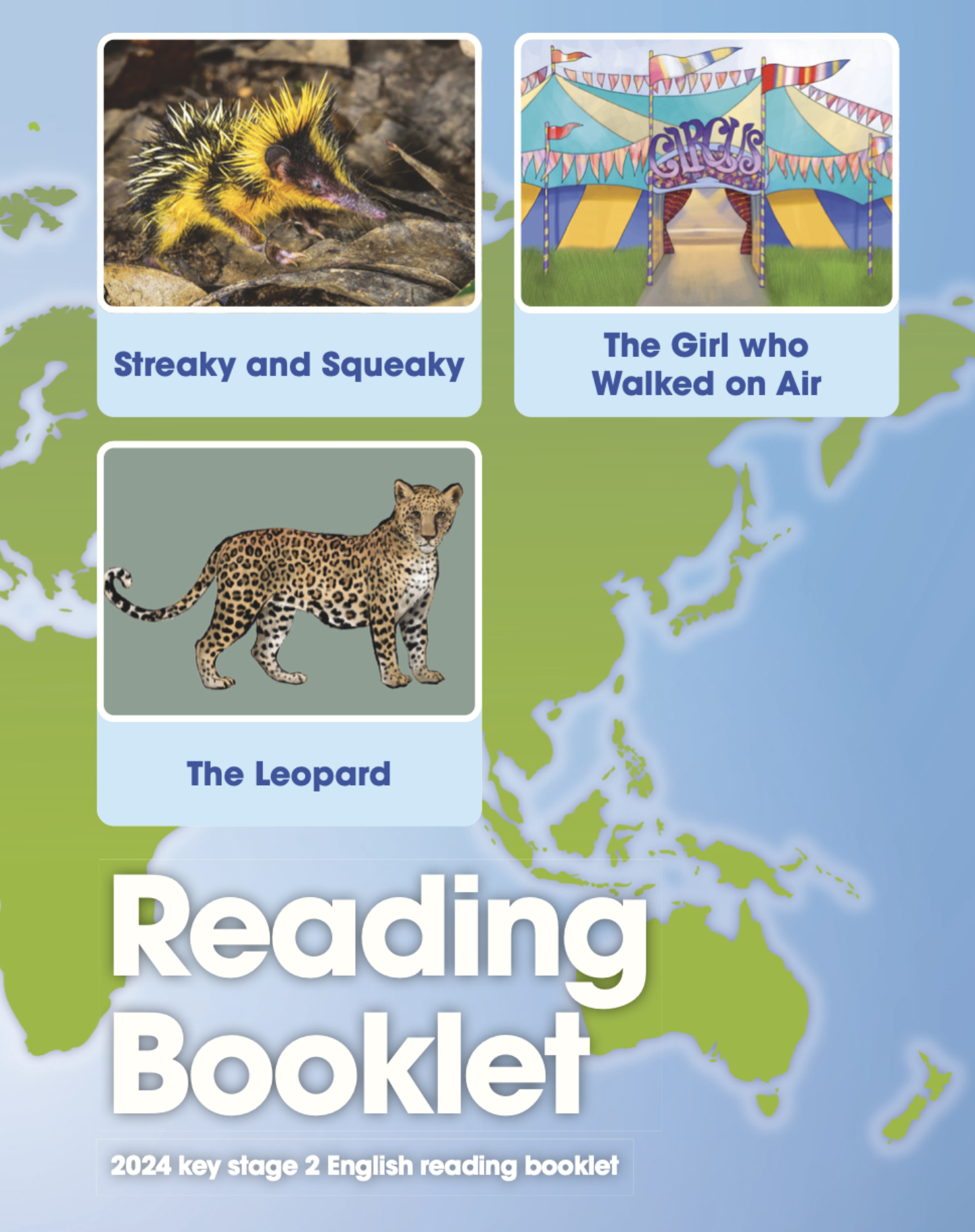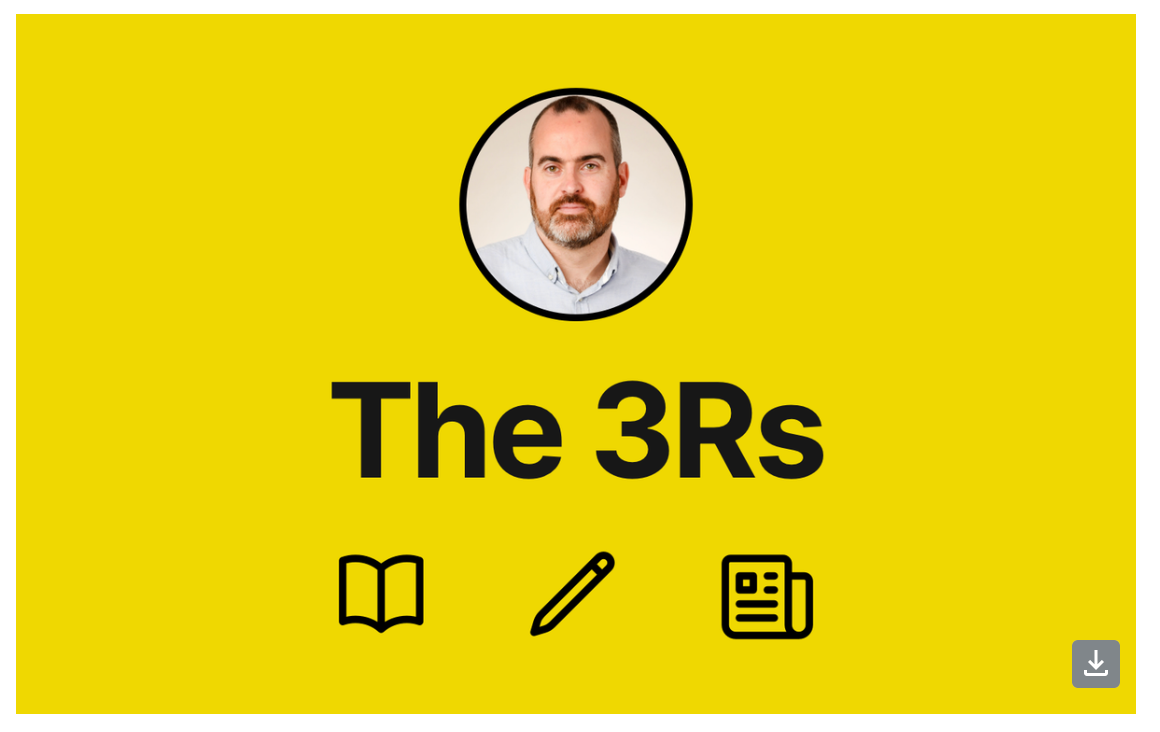Have you ever seen a ‘streaky tenrec’? Probably not. For pupils sitting the key stage 2 SATs reading assessment, they likely met the tenrec and the wildlife of Madagascar for the first time.
The first text for children to read in their SATs reading assessment was an informational text, entitled ‘Streaky and Squeaky’. Like many informational texts, it presented a unique topic unlikely to have been directly taught in the primary school curriculum. This approach is common in general reading comprehension assessments. It seeks to assess a valid, generalised reading ability, separate to expectations of what has been explicitly taught in the national curriculum.
The streaky tenrec text includes tier 3 scientific/geographical vocabulary like “deforestation”, “decline”, “food chain”, and “population”. These are words which stronger readers would likely have encountered in the curriculum along with other rich language experiences. As a result, those readers are likely to better link them together into rich schemas of knowledge (that is to say, inferring more meanings than a reader who was not already familiar with them). In this regard, the SATS reading comprehension test is what E. D. Hirsch describes as a ‘knowledge test in disguise’.
There is the common idea that we can teach reading skills like ‘inferencing’ or 'finding the main idea'. This is likely based on the ubiquitous presence of reading tests and their rubrics. In reality, the main idea is that streaked tenrec is a species living in a complex habitat and ecosystem. There is no real ‘find the main idea’ reading skill in that. It is more plainly your knowledge of words and the world (for young children this is commonly mediated by reading in the classroom) that is being tested.
The streaked tenrec text includes the tricky academic language that features heavily in informational texts. It includes lots of scientific and subject specific language (in this case a hybrid of geography and biology language), such as the phrases “soft-bodied invertebrates” and “stridulation”. This is combined with more age-appropriate ‘book language’, such as “confused hodgepodge” and “marvellous streakiness and squeakiness”, along with texts features that guide the reader through the text.
Of course, pupils have three such texts to grapple with. The SATs then become a demanding test of fluent and knowledgeable reading. Over 2000 words, across the reading assessment, need to be cohered quickly into meaningful understanding (those schemas matter).
Do we need to change the SATs reading assessment?
No assessment is perfect – and the KS2 SATs reading certainly isn’t. So, we should replace it with something better, right?
There has been a call to change the SATs assessment into a reading test where the topic of what is being read is already known and pre-taught in the curriculum. For example, schools could be told that pupils are going to read texts about the Amazon rainforest. This could create some equity for those pupils who don’t possess the background knowledge of words and the world, accumulated via lots of prior reading and learning. However, in doing so, it would shift the nature of the assessment to being one more squarely testing teachers’ ability to teach a reading curriculum successfully, rather than a more generalised reading ability and knowledge of the English language.
It doesn’t take too big a mental leap to see schools narrowing the curriculum to hot house those topics announced for the SATs. A term of year 6 (then 5, then 4…) could become devoted to learning everything about the Amazon – with pupils mired in endless SATs style mini-texts. Any aim to make a shift that privileges a knowledge-rich reading curriculum could get mired in the expediency of a narrowed curriculum. Perhaps we could shift the SATs to reading about topics in science, history, geography and more, but it would require a fundamental change.
You could argue that changing the stakes of the SATs may mitigate the issue to a degree. And yet, you’d then still have the challenge of whether your assessment is validly assessing an ability to read widely and independently. Would pupils go onto struggle with unfamiliar texts? In the real world, we are constantly facing new words, ideas, and topics, because the school curriculum can never cover the span of human knowledge necessary within the limited time of the school day.
A yet more radical solution, proposed knowledge by some experts, is to jettison reading comprehension assessments all together. Perhaps you could replace them with reading fluency assessments, which are a handy proxy for reading ability. However, what if we focus on fluency and forget to emphasise the meaning of the language? We may unintentionally create a focus on speed reading and oral reading, but miss a vital focus on comprehension (which would hamper their validity). ‘Words per minute’ could be the new ‘find the main idea’. The complexity of reading could so easily shrink, but just in another direction.
The current SATs are imperfect, and yet the alternatives have their own flaws and limitations too.
The current reading SATs are typical of general standardised reading assessments. Only we mistake them for the pinnacle of the school curriculum that we must imitate, and practice - over and over and over. Instead, we need to see them as an assessment that actually requires relatively little specific test-preparation beyond basic familiarity of the question types, the format, and the timing.
The fundamental problem…and five solutions
There is no easy answer for getting the right reading test format. Reading is a complex skill, comprised of a wealth of subtly interlinked knowledge and strategies that are developed over years, inside and outside the classroom. Tests usually struggle with such complexity, and they offer us pale approximations.
A key answer for me is to step back from the test format itself and aim to appraise successful readers and skilled reading.
The biggest misconception about the current iteration of the SATs standardised reading assessment is that practising lots of short texts (that look just like the streaky tenrec one), and answering questions that endlessly ‘retrieve and record information’, and ‘summarise main ideas’, improves your reading ability.
Doing this can steal so much curriculum time that pupils aren’t doing the wide reading necessary to actually become skilled and knowledgeable readers. It is the SATs reading paradox that penalises most the pupils who need to read the most in our classrooms. Changing the format isn't a quick fix.
The fundamental problem is that you don’t become a skilled and knowledgeable reader by undertaking pale-imitations of reading comprehension tests. It occurs when you read widely, you read – and are taught – topics in richly connected ways. You summarise, but when you are talking about texts in a dynamic way that lets you read…and read…and read, and where you don’t have to stop and write three ‘retrieve’ questions every 5 minutes!
Reading is complex. Improving it is slow, difficult, cumulative and needs to be well connected by design…(oh, and it’s also fun and amazing!).
There is no one solution to complex reading, but I think there are five key interlinked solutions:
1. Get ‘learning to read’ right. It all starts early reading experiences, good phonics instruction and developing pupils’ phonemic awareness. They need lift the sounds from the page until it appears effortless. We know how to do this stuff really effectively – deploying systematic approaches to phonics alongside a rich diet of reading with and to children.
2. Bridge to comprehension with reading fluency. The ability to read words along and start to deploy the appropriate pacing, stress, intonation and phrasing is ‘reading fluency’. Pupils need lots of practice of reading aloud and fluency. Happily, it builds nicely on phonics approaches and it bridges to lots of quality book talk and approaches that then build comprehension.
3. Do lots of wide, deep, rich reading, building knowledge of the world along the way. The recent focus on curriculum has foregrounded how children learn by building knowledge and connecting those schemass in helpful networks. The key here is reading lots. Reading lots of those ‘Goldilocks texts’ that aren’t too easy (otherwise what would you be learning), but not too hard either. I think we need to step away from the worksheets and five paragraph texts (those pale imitations of the SATs which were never meant for teaching). Children need to read full books. They need to read stories and informational texts. If they overlap in 'reading clusters' all the better. Only then will they make the connections and deal with the complexities that stick long in the memory.
4. Teaching reading comprehension strategies for tricky texts. There is sound evidence that when you are reading a ‘Goldilocks text’, you need to be strategic. You need to question, clarify, think hard about the author’s intention, and summarise what you think. These reading comprehension strategies can be deployed during reading. They don’t need to be over-taught (please don't teach summarising on Weds, then questioning on Thursday). They should be focused on the text at hand, helping steer some rich book talk as a helpful scaffold. Don’t get fooled by the marks scheme – these strategies are an only a scaffold to help build the aforementioned knowledge – they aren’t the requisite knowledge itself.
5. Explicit and implicit vocabulary instruction. It can be very helpful to explicitly teach words like ‘deforestation’, ‘decline’ and ‘population’. These are high value words that initiate lots of connections and schemas of knowledge. You can teach word roots, word families, synonyms and antonyms. If we don’t forget to do lots of wide, rich reading, and we select the words to teach carefully. Of course, may words are learnt implicitly through reading lots. In addition, by teaching a small number of words explicitly, we help foster ‘word consciousness’ – a curiosity for words – that served children well when they read widely and do generalised reading assessments.
To do all five well needs planning and time. It probably needs the space created by not imitating the assessment over and over. In short, if practising the assessment stops you doing lots of 2, 3, 4, and 5, then just stop. It is Fool’s gold!
Let’s return to streaked tenrecs. The pesky little blighters that beset our young readers. These cute little creatures offered a vehicle for a compromised assessment that captures a partial picture of reading comprehension ability. And yet, you'll struggle to find an assessment that does a much better job. We probably shouldn’t pay tenrecs, or the reading SATs format, too much of our attention. Instead, let’s read and read and read... about animals, and rainforests, and biomes, and brilliant characters. Let’s focus on doing that and thereby improving reading in ways that are more effective, long lasting, and more meaningful that merely aping the assessment format.






Comments